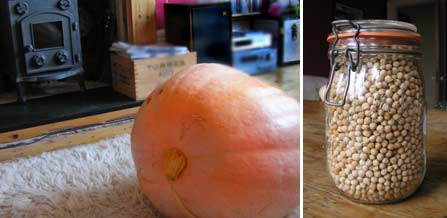Wintertime down on the plot
Tidy Tom says Spring is round the corner down the allotment
There’s not much happening on the allotment at the moment, but a few things are growing.
The leeks are less impressive this year than previously, I think due to the strong winds across the site which have hampered their growth. We’ve had a few parsnips which were variable in shape and size as ever. Next year I shall try a bit harder with them, I’ve heard of people germinating them in sieved soil inside old toilet roll tubes which can be transplanted without disturbing the young plant (though parsnips and carrots don’t like this). I’ll let you know how I get on.
The autumn planted garlic is doing okay, I seem to have got 100% germination for it which is a first. It’s growing in the bed I double-dug in the autumn and spread seaweed all over, so it’s hopefully off to a good start.
The strong winds during the early part of the winter also claimed a major casualty — the shed collapsed. It was fairly poorly anyway, but the wind killed it off for good. I have started building a replacement, I’ve got as far as a floor so far, with concrete foundations, so it should be a bit more weather proof. All the rest of the materials to build it are now onsite, but I’m waiting for some better weather before I can start building it properly. All the materials (apart from things like screws and nails) are second hand, mostly out of skips and a few bits from the Hastings and Bexhill Wood Recycling Project.
The pumpkin eventually grew to 32kg! That doesn’t seem too bad given how little effort went into growing it. I’m tempted to try again next year and see if I can improve on that. After asking around, I ended up donating the pumpkin to a day centre in St Leonards who carved it and then made soup to feed 70 people. The photo shows it relaxing in front of my fireplace before it went to its new home.
A resounding success were the chickpeas — I harvested about 2kg of them in all. They were easy to establish by sprouting indoors, and thrived on the allotment. As a legume they fix nitrogen in the soil too, so should have improved that bit of ground. Having read up on growing them in the UK, many people have reported they do well until ripening, when they suffer from rot in their pods, but I think for once the wind across the allotment site worked in my favour and prevented the damp from setting in.
The most difficult aspect of growing them was harvesting — each plant had up to 50 pods on it, but each pod only had one or two peas in it. It was easy enough to strip the pods off the plant, but removing the peas from the pods was somewhat tedious.* Nevertheless, I shall definitely be growing them again next season.
It doesn’t seem like it at the moment, but spring is really not that far away. Hopefully before it comes I shall have finished the digging and built the shed, but I suspect it will all get done in a rush as usual.
Mid-January 2010
* The Editor adds: In Malta they eat chick peas that are still green as a snack. You see people sitting out doors chatting or walking down the street carrying a bunch of stalks and nibbling at the peas straight from the pods.

If you’re enjoying HOT and would like us to continue providing fair and balanced reporting on local matters please consider making a donation. Click here to open our PayPal donation link. Thank you for your continued support!
Also in: Green Times
« Almost Summer alreadyHow not to lose the plot »








